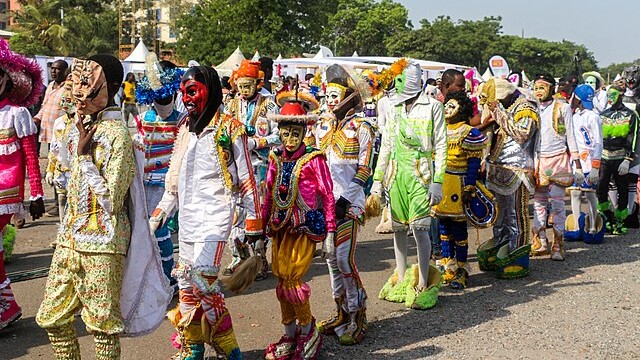In Ghana, the calendar is punctuated by festivals that transform towns and cities into theaters of rhythm, color, and communal expression. These gatherings, rooted in history and infused with contemporary energy, serve as touchstones of cultural identity and unity. Each one tells a story—of survival, spirituality, leadership, or diaspora—and together they form a tapestry that binds a diverse nation.
One of the most prominent is the Homowo Festival, celebrated by the Ga people of Accra. The name, meaning “hooting at hunger,” recalls a time when famine threatened the community’s survival. Today, it is marked by parades of drummers, dancers, and chiefs in vivid regalia, their movements carrying echoes of resilience and renewal. Central to the festivities is the preparation of kpokpoi, a cornmeal dish shared communally, symbolizing abundance after hardship.
In Kumasi, the cultural capital of the Ashanti, another spectacle unfolds during the Asantehene’s birthday celebrations. The occasion is both a personal milestone for the monarch and a reaffirmation of the Ashanti Kingdom’s heritage. Processions highlight the Golden Stool, the sacred emblem of Ashanti unity, while kente-clad courtiers and warriors fill the streets with ceremonial pageantry. For many, the event reasserts the enduring power of tradition in an era of rapid change.
The biennial Panafest, or Pan-African Historical Theatre Festival, offers a different lens, one that bridges continents. Conceived as a celebration of African unity and a reckoning with the legacies of enslavement, it draws artists, intellectuals, and activists from across the diaspora. Through theater, workshops, and forums, participants confront questions of identity and empowerment, while performances of music and dance reaffirm cultural pride. Cape Coast Castle, a site once central to the transatlantic slave trade, often becomes a focal point of reflection during the festival, linking past injustices to present calls for resilience.
Farther north, the Damba Festival animates towns with drumming, horsemanship, and prayer. Celebrated by groups including the Mamprusi, Dagomba, and Nanumba, it marks both the birth of the Prophet Muhammad and harvest cycles, blending religious observance with cultural tradition. Riders in flowing smocks guide decorated horses through cheering crowds, while musicians and dancers create a rhythm that affirms bonds between ethnic and religious communities.
These festivals are more than diversions; they are social glue, reinforcing continuity while embracing change. They foster solidarity across ethnic and regional lines, preserve rituals that might otherwise fade, and serve as forums where art, spirituality, and politics converge. In their drumming and chants, in the swirl of fabric and the shared meal, a collective narrative emerges—of survival, joy, and belonging.
Ghana’s festivals endure as reminders that culture lives not only in museums or texts, but in public squares, on stages, and in the cadence of communal celebration. In their vibrancy lies the heart of the nation.
Sources:
- Ghana Tourism Authority, National Festival Calendar, official publications
- Arhin, Kwame. Transformations in Traditional Rule in Ghana, 1951–1966. Cambridge University Press, 1985
- Gilbert, Michelle. Insight and Artistry in African Festivals: The Ghanaian Experience. Indiana University Press, 1994


